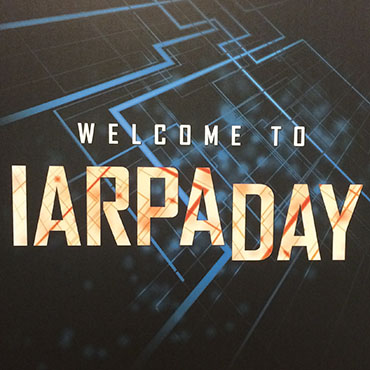IARPA unveils work on predictive intelligence

The Intelligence Advanced Research Projects Activity held its first industry day Oct. 30, and in doing so underlined predictive intelligence as a priority.

The Intelligence Advanced Research Projects Activity, the innovation funding shop for the intelligence community, had a coming-out party of sorts Oct. 29 and 30, when hundreds showed up to hear about the latest science underwritten by the agency.
Academics, intelligence contractors and entrepreneurs were on hand for IARPA’s first public industry event in College Park, Md. There, the agency charged with furnishing the IC with the technology needed to keep pace with security threats, highlighted "anticipatory intelligence," including crowd-sourced analytics, as an increasingly important tool.
The IC's 2014 National Intelligence Strategy, released in September, prioritized anticipatory intelligence, which might be described as the science of predicting unpredictable events. A senior IARPA official at the industry day called anticipatory intelligence "a new emphasis" for his agency, and the programs on display bore that out.
One such program is known as aggregative contingent estimation, which, as a program manager explained, draws on "the wisdom of crowds" to predict world events that affect U.S. interests.
IARPA held a "forecasting tournament" in which five independent research teams collected predictions from 15,000 analysts around the world. Each team had participants gauge the likelihood of an event over time, then combined all those predictions into a single probability.
One such question was on the likelihood that the Islamic State would attack Saudi Arabia, Bahrain, Jordan, Qatar or the United Arab Emirates. Researchers noticed that the assessed probability shot up right around the time of the Hajj pilgrimage. Respondents were apparently channeling news reports that there was a threat on the Hajj, the program manager said.
The ACE program provides a snapshot of global expertise on a given subject and helps weigh how analysts respond to different bits of information. "The assessed probability is up-to-date," the program manager said.
The industry day had an upbeat feel to it, and IARPA employees seemed to relish a public opportunity to share their work.
"This is actually a bit of a celebration" of IARPA, the senior official said in welcoming the participants on the unclassified day of the event, when the agency's charm offensive was in full swing. A welcome packet included a handout with a quote from the New York Times calling IARPA "one of the government's most creative agencies." A panel session titled "Life of an IARPA Program Manager" featured a cheery recruiting officer asking program managers what motivates them.
But the openness had its limits. Media were welcome, so long as they did not quote officials by name. An IARPA analyst grew visibly uncomfortable at seeing a reporter at his demonstration and quickly summoned a public affairs officer to serve as intermediary.
IARPA is rare in the IC in that much of its work – officials reckon over 90 percent – is unclassified and offers a peek into the future of intelligence operations. The shroud falls back down as the research gets applied in a classified setting.
Though the agency is a facilitator and funder of research rather than a practitioner of it, IARPA hopes academia will give the research the agency funds more staying power.
One example lies in a speech recognition program called Babel. The senior official said data from the project will be available long after it finishes (IARPA programs typically last 3-5 years). "Think of the value of this if you work in speech," he said. "There's no dataset like it." He added an appeal for researchers who use IARPA datasets to cite them as they would for any other work by academic colleagues.


